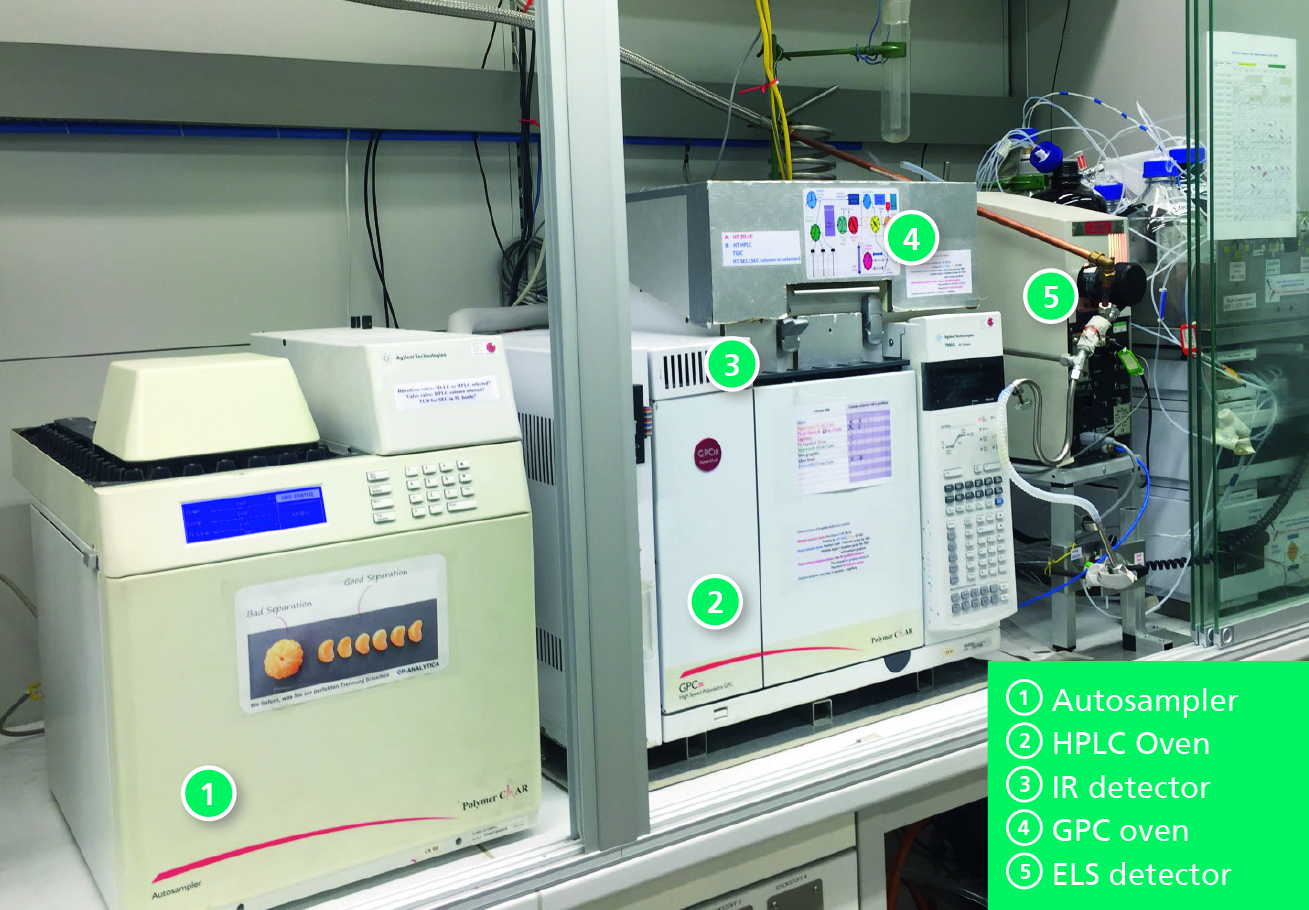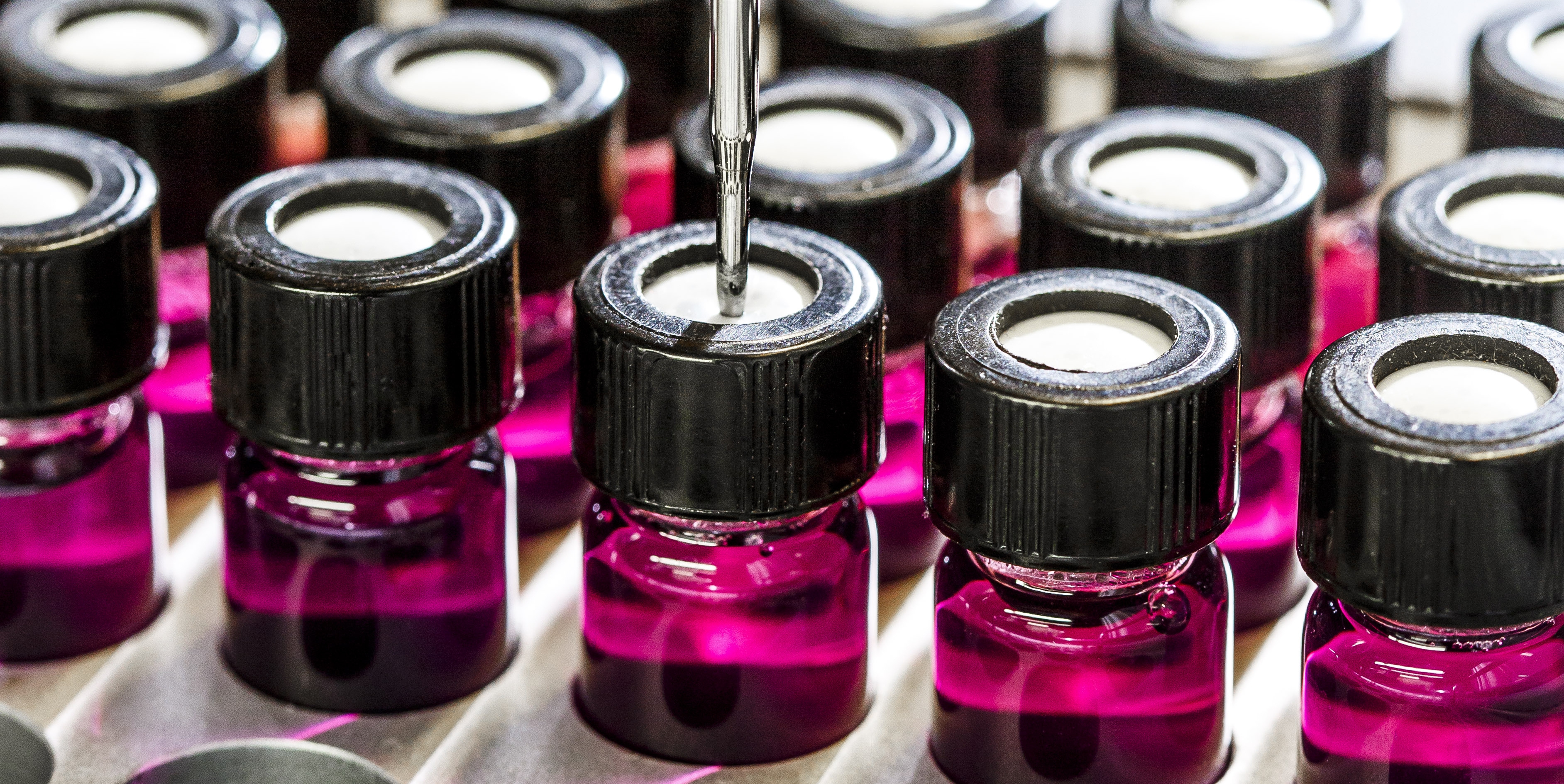Polyolefine
How effective are bonding agents? Fraunhofer LBF uses liquid chromatography for characterization for the first timeolyolefine
Functionalized polyolefins are of great economic importance as bonding agents between polyolefins and polar surfaces. Despite years of effort, up to now there has never been any analytic method that could provide a comprehensive understanding of these materials to enable their effectiveness to be quickly assessed, for instance as part of incoming goods controlling. Now, a chromatographic method developed at the Fraunhofer Institute for Structural Durability and System Reliability LBF makes it possible to develop systematic structure-property relationships for these materials for the first time. This is very useful for the development of more efficient functionalization processes. In addition, this analytic information is highly relevant for material development and for understanding material failure.


Due to their properties, which can be broadly adjusted, and because they are manufactured from inexpensive raw materials, polyolefins are the most frequently used synthetic polymers. However, their low surface energy, poor compatibility with polar polymers, and low adhesion to polar materials do represent limits to how they are used. Many of these problems can be solved by introducing polar functions, for instance through grafting them with appropriate polar monomers. The molar mass distribution (MMD) and chemical composition distribution (CCD) then determine the application characteristics for a given total composition.
Previously established methods could not be used to determine the distribution of the chemical composition. That is why scientists at the Fraunhofer Institute developed a fast and selective method for characterizing functionalized polyolefins with an approach based on high performance liquid chromatography (HPLC). This allowed them to separate functionalized polyolefins, such as polypropylene-grafted maleic anhydride (PP-g-MA) into polar and non-polar fractions.
This allows them to quickly and easily identify the fraction of the sample active as a bonding agent (functionalized), and then determine the effectiveness of the grafting process. The scientists further developed the HPLC approach to obtain information on the degree of functionalization of polymer chains of different lengths (different molar mass), i.e. the relationship between MMD and CCD. Combining HPLC with gel permeation chromatography (GPC) made it possible to separate PP-g-MA samples based on their chemical composition and then on their molar mass. First, this method made it possible to determine the actual active content of functionalized polypropylene in a quantitative way for the first time. Second, it could be used to show that the functionalized material had a lower molar mass than the non-functionalized fraction.
Last modified:
 Fraunhofer Institute for Structural Durability and System Reliability LBF
Fraunhofer Institute for Structural Durability and System Reliability LBF